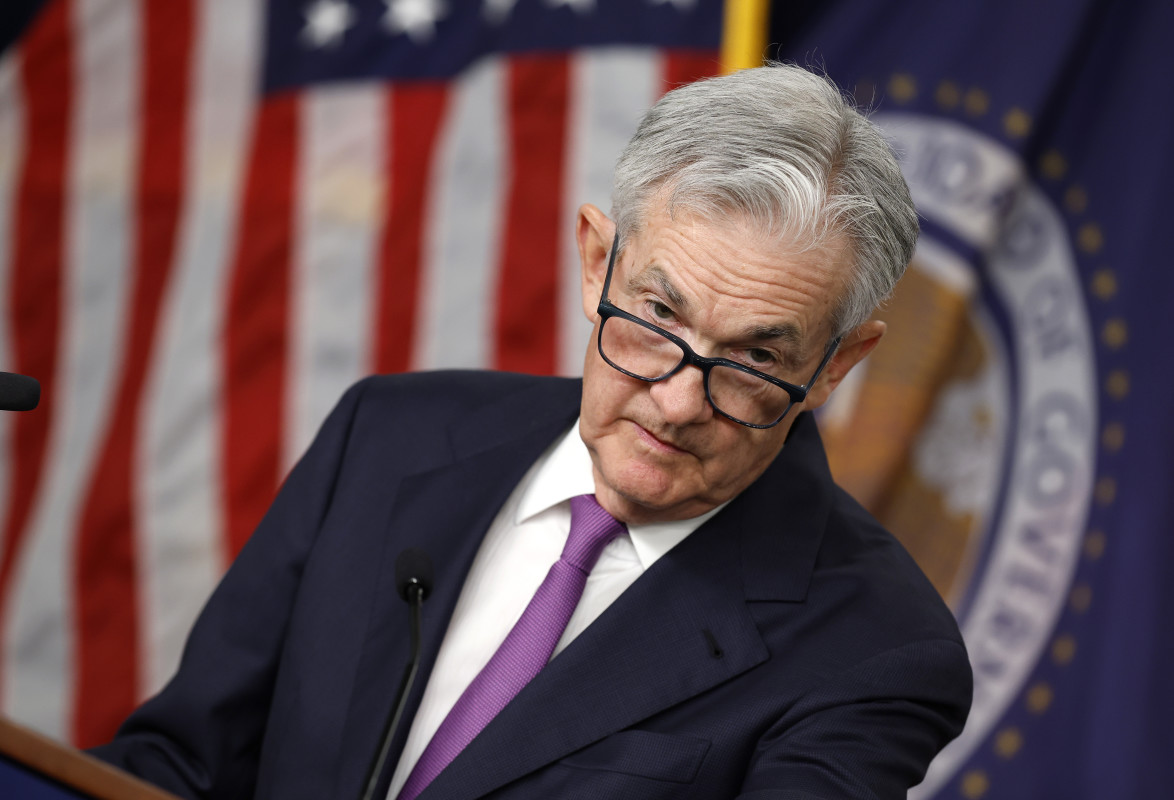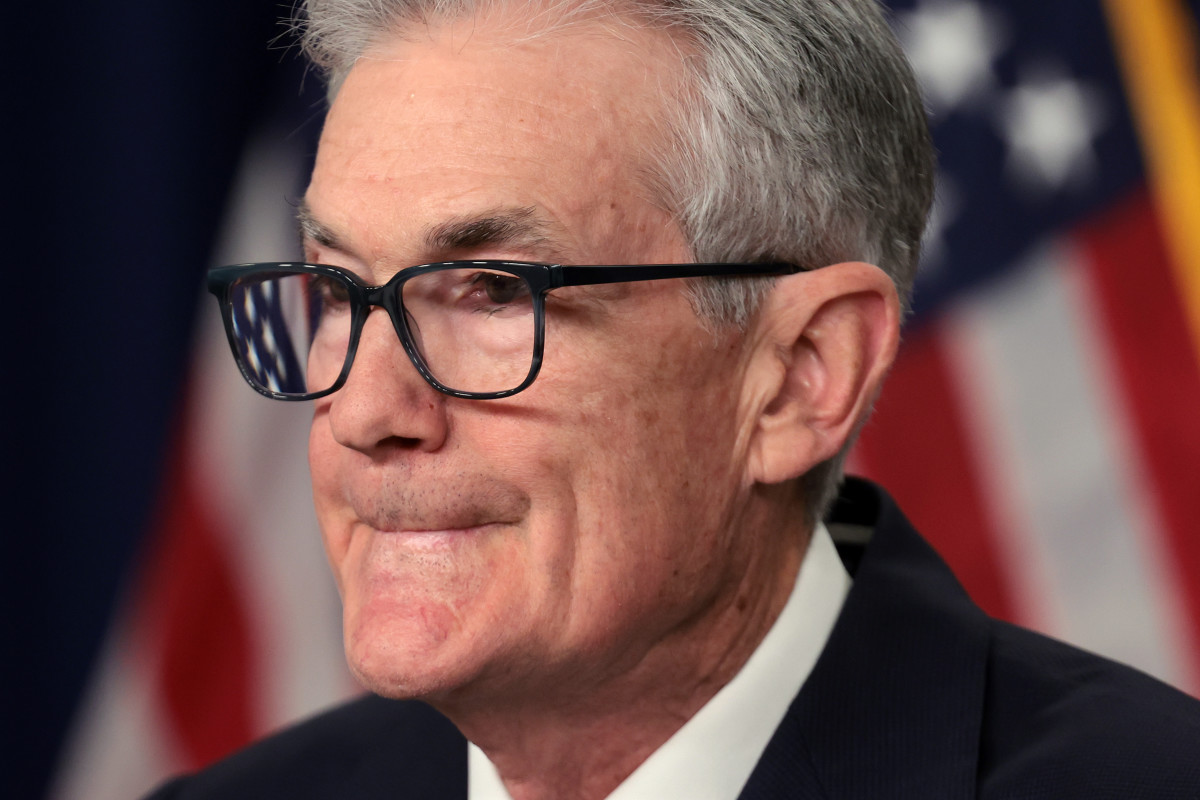
The Federal Reserve dropped more than a few hints that in the spring it intends to reverse some of its more than 5 percentage points of interest-rate hikes over the past two years. The move sent stocks into record territory and largely validated the market's bet on a soft landing for the world's biggest economy.
Curiously, however, while the Fed's projections for three 2024 rate cuts matched its forecast from December's Summary of Economic Projections, the so-called dot plots from the March meeting included beefed-up estimates for growth and inflation. And the Fed indicated that its preferred PCE gauge wouldn't slow to its 2% target until 2026.
That didn't stop stocks from rallying hard, with all three major indexes, including the S&P 500, hitting all-time highs on the back of outsized gains for interest-rate-sensitive tech names.
Bond markets, meantime, were notably more subdued, as investors looked to the firmer near-term inflation forecasts, which see a core PCE Price Index reading of 2.6% for this year and 2% growth rates into 2026.
Benchmark 10-year Treasury-note yields were last marked at 4.269%, effectively unchanged from the levels seen prior to Wednesday's Fed decision, while 2-year notes eased around 8 basis points (0.08 percentage point) to 4.628%.
"Growth is expected above trend for the next three years, so stocks will become more appetible than bonds as they should provide higher returns," said Althea Spinozzi, head of fixed-income strategy at Saxo Bank. "That's bearish for U.S. Treasurys, which carry a long duration."

Investors also focused on comments from Chairman Jerome Powell about the pace of bond sales from the Fed's $7.5 trillion balance sheet, which are likely to slow over the summer months.
A looming bank cash crunch?
At present, the Fed is selling around $60 billion in Treasury bonds, and another $35 billion in mortgage bonds, back into the market each month. That's adding to the more than $1.5 trillion in total sales since it began its latest round of so-called quantitative tightening in 2019.
The sales add more supply to the market and put upward pressure on overall Treasury yields. They act as a second defense against inflation (the first line being the federal funds rate) but increase borrowing costs and slow economic growth.
Tapering those sales would normally be good news for big bond investors, as it lessens the amount of paper in the market, lowers Treasury yields, and lifts overall prices. (Bond prices and yields move inversely to each other.)
But the Fed is focused on tapering quantitative tightening not because it thinks inflation is slowing fast enough. It's doing so because it doesn't want to create an even bigger problem: a cash crunch in the nation's banking system.
Related: Bond markets tell Fed rate story that tech-powered stocks still ignore
Avoiding strain on the primary bond dealers
The Treasury's amped-up borrowing, which funds the government's deficits, has added strain to primary dealers in the Fed system. The strain occurs as they take down the billions in weekly bond and T-bill sales and, by extension, reduce their overall level of reserves parked each night at the Fed.
That can lead to a spike in overnight borrowing rates — shutting out smaller and regional banks from short-term funding markets, partly because of risks tied to commercial real estate — and a cascading effect on the banking system and the stock market.
“This is an incredibly sensitive time for the Fed,” Melissa Davies, chief economist at London-based Redburn Atlantic, said in a Bank of New York Mellon research report.
“It’s trying to orchestrate a soft landing, and the last thing it wants is an event that forces it to flood the markets with liquidity before it’s reached its inflation target.”
Focus on the reverse-repurchase market
The Fed tries to smooth this process through what is known as reverse repurchase agreements, where the central bank takes in cash and doles out existing bonds in return, adding to collective reserves that all banks can tap (for a fee).
Those reserves, however, have fallen from $2.2 trillion in spring 2023 to just under $500 billion, according to Fed data. That has added to concern that "once excess liquidity in the Fed’s reverse-repo facility is drained, purchases of newer Treasurys that will replace the ones the Fed is retiring will have to be funded with bank reserves because the market may not want to buy them," according to BNY Mellon.
An even bigger issue is tied to the fact that what's left of the Fed's excess liquidity isn't spread evenly through the 4,000 banks that populate the U.S. financial system. Smaller and regional lenders have seen a much bigger reduction than the top 25 commercial banks over the past two years.
That could manifest into extreme funding stresses over the coming weeks, including the typical end-of-quarter demand period on March 31, now that other funding options, including last year's Bank Term Funding Program, have expired.
"We’ll be watching carefully, but one of the reasons [we will soon slow the pace of quantitative tightening] is that we want to avoid any kind of that turbulence," Powell told reporters yesterday in Washington.
"This is our second time in doing this and I think we’re going to be paying a lot of attention to the things that started to happen and that foreshadowed what eventually happened at the end of that tightening cycle, where we wound up in a short reserves situation. And we don’t want to do that again, " he added.
More Economic Analysis:
- Bond markets tell Fed rate story that stocks still ignore
- February inflation surprises with modest uptick, but core pressures ease
- Vanguard unveils bold interest rate forecast ahead of Fed meeting
Powell's "last time" reference reflects a repo-market crisis in September 2019 when a shortage of excess reserves triggered a massive spike in overall borrowing costs.
That spike rocked the banking sector and caused a near 5% decline for the S&P 500 over a period of just two weeks. The SPDR S&P Bank ETF (KBE) declined 9% and Bank of America (BAC) fell 10%.
Bank reserves are much more ample today, hovering around 12% of GDP compared to just 6.5% in 2019, but the Fed will want to get out in front of any financial sector stresses well before they happen.
Timing that effort, however, isn't easy, which is likely why bond markets have had such a muted reaction to the Fed's overall policy statement.
"The difficulty for central bankers is knowing exactly when to begin slowing down the balance sheet runoff," BNY Mellon said.
"The Fed wants to target a point where reserves go from being as abundant as they are today, to being ample enough to keep the U.S. financial system running smoothly," the bank added.
"That level has proven difficult to pinpoint in the past, and it may take repo price volatility to signal the crossover."
Related: Veteran fund manager picks favorite stocks for 2024







